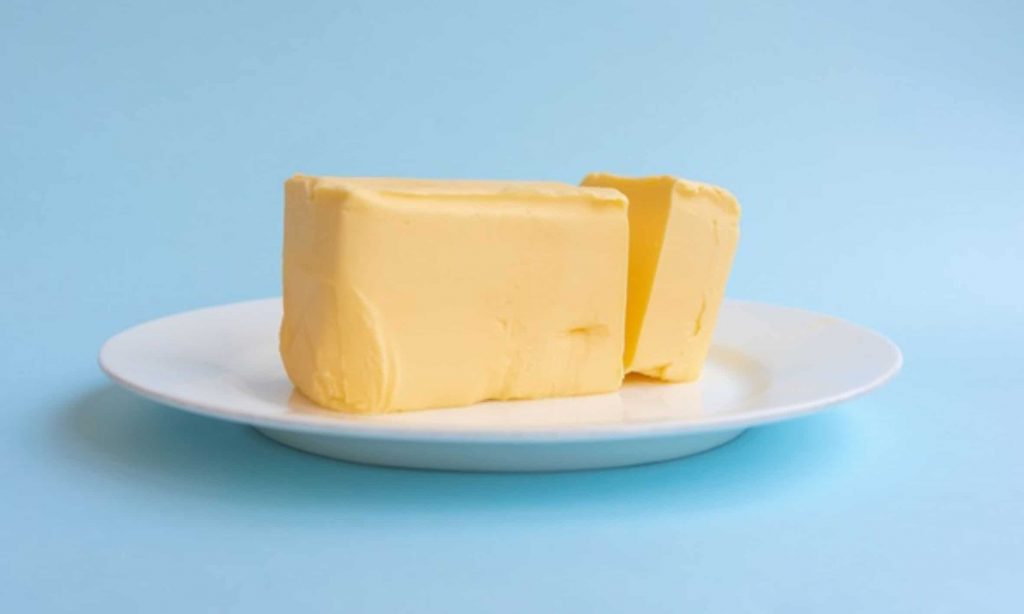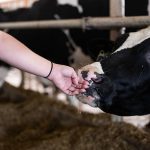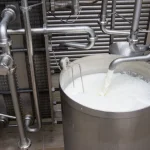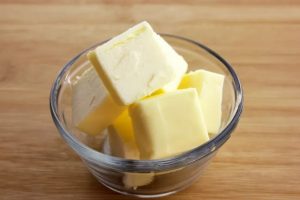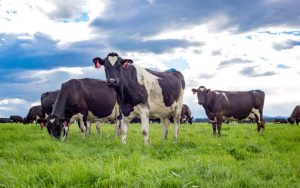
CME butter, fueled by the August Cold Storage data, rocketed to a record high $3.3350 per pound last Thursday but closed Friday at $3.30, up 30 cents on the week, after jumping 28.25 cents the previous week, 64 cents higher than on Sept. 1, and 15.50 cents above a year ago.
The week saw 7 sales and 124 for September, down from 249 in August.
The butter regained 4 cents Monday on an unfilled bid, and rocketed 8 cents Tuesday on a trade, hitting a record high $3.42 per pound.
Spot cream was “slightly looser” in parts of the West last week but overall is tight. Much of it is committed to contract obligations and near-term tightness is expected.
CME cheese was hemorrhaging. The Cheddar blocks closed Friday at $1.72 per pound, down 6 cents on the week, the fourth straight week of decline, 23 cents lower than on Sept. 1, lowest since July 19, and 24.75 cents below a year ago.
The barrels fell to $1.47 Thursday, lowest since July 19, but closed Friday at $1.48, 12 cents lower on the week after plunging 21 cents the previous week, down 39 cents on the month, 72 cents below a year ago.
Sales totaled 2 cars of block on the week and 24 for September, up from 15 in August. Barrel sales totaled 30 for the week and 75 for the month, up from 21 in August.
The blocks were unchanged Monday but 12 loads traded hands. They were unchanged Tuesday as well.
The barrels were up 6.25 cents Monday on 9 trades, and stayed put Tuesday at $1.5425, 17.75 cents below the blocks.
Bearishness on the CME inspired customers to step back, says DMN, but Central cheesemakers continued to report ongoing demand. Food service demand remains intact and retail expectations are “somewhat firm.”
“Barrel processors, despite facing stronger bears than their block processing counterparts, say inventories are not a near-term concern,” says DMN. “Milk availability has something to do with this, as a number of processors are not running at full capacity for the first time this year.” Spot milk remains tight in the region, with Mid-Week spot prices at $1.00 over Class or higher.
Grade A nonfat dry milk closed Friday at $1.1850 per pound, up 1.50 cents on the week, 11 cents higher on the month, but still 38.50 cents below a year ago. There were 9 loads sold on the week and 61 for the month, down from 71 in August.
Monday’s powder was unchanged but inched a quarter-cent lower Tuesday to $1.1825.
The whey closed the week and month at 29 cents per pound, down 1.25 cents on the week, 1.50 cents lower on the month, and 15 cents below a year ago. There were 54 sales on the week and 109 for the month, up from 58 in August.
Traders took the whey down 0.75 cents, with 12 loads finding new homes. It regained a quarter-cent Tuesday, inching back to 28.50 cents per pound, with 11 loads traded.
Butter demand questioned
The latest Supply and Utilization report showed July butter utilization up 2.5% from a year ago, due to domestic use being up 7.6%, while exports were down 61.2%. Demand likely remained strong in August and year to date was up 9%, according to StoneX broker Dave Kurzawski in the Oct. 2 “Dairy Radio Now” broadcast.
“People don’t change their dietary habits that quickly,” Kurzawski stated, considering last year butter demand was down about 6.5%. “Are we eating more butter and more fat this year?” he asked. “Maybe. Certainly in ingredients and more cream perhaps, but I don’t think we’re eating that much more butter.”
Add to that flat milk production and, while butter demand is good, it’s probably not as good as it would appear, “But we’re into a seasonal demand push.”
Feed ratio sees gain
Significant drops in feedstuffs plus a hefty increase in the All Milk Price moved the latest milk feed ratio higher. The USDA’s Ag Prices report shows the August ratio at 1.67, up from 1.38 in July, and compares to 1.69 in August 2022.
The All Milk Price average saw its first advance in 10 months, jumping to $19.70 per hundredweight, up $2.30 from July, but $4.40 below August 2022.
The national corn price averaged $5.73 per bushel, down 49 cents from July, after falling 27 cents the previous month, and was $1.51 per below August 2022.
Soybeans averaged $14.10 per bushel, down 60 cents, after rising 20 cents the previous month, and $1.20 per bushel below a year ago.
Alfalfa hay dropped to $230 per ton, down $14 from July and $46 per ton below a year ago.
The August cull price for beef and dairy combined climbed to an average $115 per cwt., up $4 from July, $24.90 above August 2022, and $43.40 above the 2011 base average.
Income over feed costs in August were below the $8 per cwt. level needed for steady to higher milk production for the seventh month in a row, according to dairy economist Bill Brooks, of Stoneheart Consulting in Dearborn, Mo.
Powder, fat raise GDT
The bulls got more fodder in Tuesday’s Global Dairy Trade auction where the weighted average headed higher for the third session in a row, up 4.4%, following the 4.6% rise on Sept. 19, and 2.7% on Sept. 5.
Traders brought 84.5 million pounds of product to the market, up from 82.4 million on Sept. 19. The average metric ton price climbed to $3,104 U.S., up from $2,957 on Sept. 19, highest since July 18.
Skim milk powder again led the gains, up 6.6%, following a 5.4% rise on Sept. 19. Whole milk powder was up 4.8%, following a 4.6% gain. Anhydrous milkfat was up 3.7% after gaining 5.3%. Butter was up 1.3%, which followed a 3.8% gain.
GDT Cheddar fell 4.8%, after slipping 1.7% on Sept. 19, and lactose was off 1.3%. It did not trade last time.
StoneX says the GDT 80% butterfat butter price equates to $2.1267 per pound U.S., up 3.7 cents from the Sept. 19 event, and compares to CME butter which closed Tuesday at a world high $3.42. GDT Cheddar, at $1.7479, was down 8.6 cents, and compares to Tuesday’s CME block Cheddar at $1.72.
GDT skim milk powder averaged $1.1604 per pound, up from $1.0887, and whole milk powder averaged $1.3296 per pound, up from $1.2694. CME Grade A nonfat dry milk closed Tuesday at $1.1825 per pound.
Hearing continues
The Federal Milk Marketing Order hearing continues in Carmel, Ind. The Milk Producers Council’s Geoff Vanden Heuvel, director of regulatory and economic affairs, reported in the Sept. 22 newsletter that dairy processors, represented by the International Dairy Foods Association, wrapped up their testimony on make allowances on Monday and Select Milk Producers cooperative submitted proposals 10, 11 and 12 into the hearing.
“All three of these proposals would increase producer prices,” says Vanden Heuvel. “Select submitted significant testimony and data from their own operations and experiences as well as expert testimony from an academic with significant cheese making expertise.
The major opposition to Select came from California Dairies Inc. and the National Milk Producers Federation which, while acknowledging that Select had a point, stated that there is not enough verified data to make changes in yields and shrink factors at this time. More details are posted at https://www.milkproducerscouncil.org.
